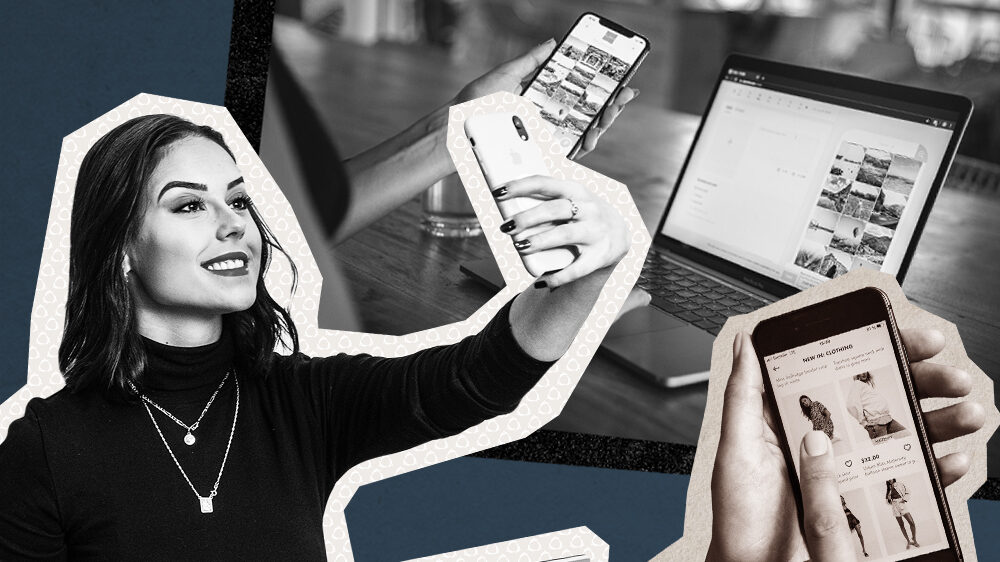More authentic user generated content! Even more e-commerce in even more places! Fewer cookies!
Digital marketing is fluid and those who become content with their knowledge will soon find themselves out of touch. Lest you fall behind, take heart of the following developments. Your ability to connect with your audience depends on it.
User Generated Content and Influencers Are the Future
Do you know who has a ton of credibility right now? You do! With all due respect to athletes, movie stars and anyone named Kardashian, the current trend is toward user generated content. As in real users.
Video Marketing (and More!) Killed the TV Star
A recent Forbes piece reports that “92% of consumers trust organic, UGC more than they trust traditional advertising.”1Where are people finding this ‘organic’ material? TikTok, Instagram, YouTube and podcasts to name just a few examples. Video in particular is being consumed like crazy during the pandemic with 6 in 10 people saying that they’d rather watch online videos than television.2
As consumers encounter celebrities and commoners alike engaging with your product (wearing it, talking about it, reviewing it, using it, demonstrating how to use it, unpacking it from a shiny box) they may be overtaken by a desire to acquire it themselves.
Motivating User Generated Content
How can you get in on all this organic (or not quite organic) online UGC?
Engage on social media and encourage product-related posting through a hashtag/photo contest. Ensure that your packaging is something that would motivate somebody to take a video or picture. Add a personal touch. Gently nudge your customers toward giving positive online reviews. Provide those with podcasts or popular accounts with samples. Non-profits may find willing participants in their supporters. Don’t forget to tailor your efforts to your target demo!
Working With Influencers
Consider the ‘influencer’ landscape. To be sure, a celebrity endorsement is still to be coveted but, with authenticity as the guiding star, brands are trending toward those with more modest social media followings.
Forbes reports that marketers are drifting from mega-influencers and celebrities toward micro-influencers (those with five to ten thousand followers).1
According to AZ Big Media brands are taking care to tie their influencer arrangements to tangible results, perhaps signalling a taming of the wild west ways of throwing money at popular personalities and hoping for the best.
“For years, the benchmark for measuring influencer marketing success was through clicks and likes. These tended to be more of a vanity metric and less performance based. Today, many brands are looking to influencer marketing to directly drive sales.”2 This can be achieved through influencer specific offers, links, codes, and pay structures more closely tied to results.
E-Commerce Optimization
Have you heard that e-commerce is becoming ever more popular? This may not be breaking news, but look for continued growth and increasingly sophisticated marketing efforts.
Remember ‘real life’? Tours tended to ‘exit through the gift shop’ and festivals were arranged to maximize shopping. Online retailers must likewise eliminate barriers to purchase. To the greatest extent possible, instances of online exposure for your product should link to seamless purchasing experiences, ones that feature various payment options and solid remarketing campaigns.
Business 2 Community highlights the transition of social media from connection and discovery platforms to commerce, with Facebook (Marketplace) and Instagram (Guides) serving as prime examples.
“Social media now is very much about moving towards marketplaces and stores. Often in-app, purchases are now incredibly easy to make and social media platforms are scrambling to make it even easier. See something on social (discovery), and then buy it (purchase). In essence, social media is swiftly becoming a retail space that offers convenience. Expect it to become more obvious as 2021 plays out.”3
The Death of Cookies?
Various heavy hitters in the tech world are attempting to appeal to consumers by emphasizing increased privacy. Google Chrome is in the process of sunsetting the ‘cookies’ that follow you around the internet, replacing them instead with something called Federated Learning of Cohorts (FLoC).
“This process essentially groups people with similar interests into cohorts to protect the privacy of the individual and allows advertisers to still serve relevant ads while keeping each person’s browsing private,” reports Search Engine Land.4
Essentially Google will base digital data on ‘groups of people like you’ as opposed to ‘you specifically’.
Will digital advertisers be able to not have their cookie and eat it too? Google says the new system will maintain 95% of previous conversion rates5 but this remains to be seen.
In the absence of this ‘third party data’ marketers are likely to place increased emphasis on zero party data (provided freely by the customer), first party data (gained by observing behaviour on their specific website or app) and second party data (first party data obtained from other companies).
Evolution of Digital Marketing
The only thing constant is change, which is why it’s important for companies to trust their digital marketing to individuals that not only demonstrate a solid understanding of today’s landscape but also possess an appetite for ongoing learning. As technology and consumer habits continue to evolve, companies that constantly reassess their practices will be rewarded.




